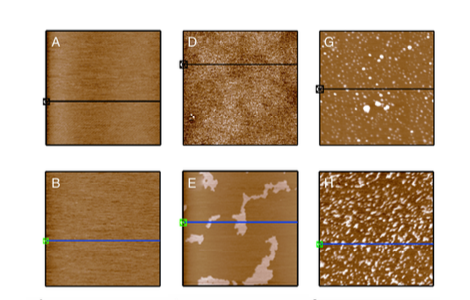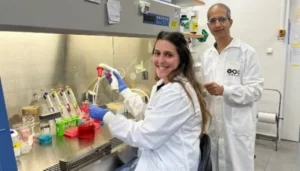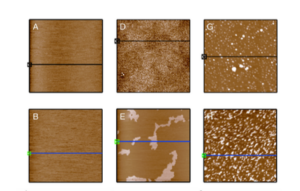Coronavirus : assouplir le confinement va-t-il provoquer une contagion en forme de "montagnes russes" ?
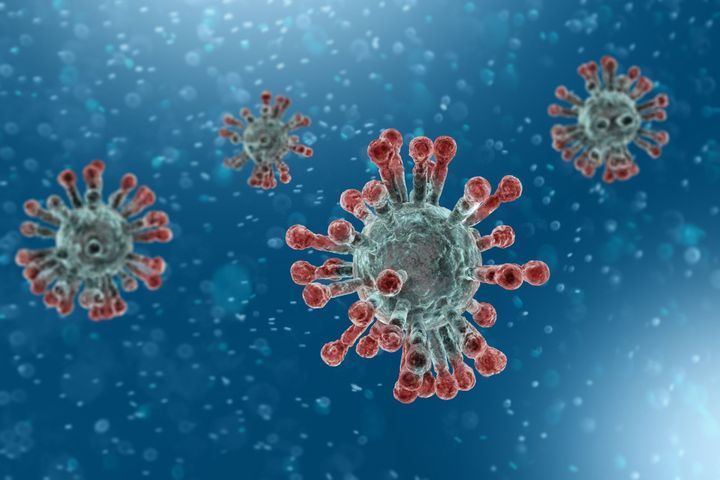
[:fr]
Pour des raisons économiques et sociales, les gouvernements voudraient assouplir au plus vite les règles du confinement. Mais à quel prix et à quel risque ?
Marc Brzustowski, docteur en sociologie et sciences sociales (Paris VII), chercheur associé à l’ENSP (Rennes), enseignant à Lorient et auteur pour JForum, a repéré cet article de la biologiste Sharon Mikhailov, Directrice d’équipe pour des essais cliniques au sein d’un CRO (contract research organization) et ancien chercheur au centre médical Sheba.
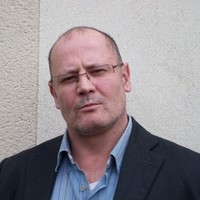
Marc Brzustowski a expliqué à Israël Science Info pourquoi il a décidé de le traduire : « cet article est révélateur du fait que nous ne nous trouvons pas dans une simple courbe de Gauss en forme de cloche, dans l’attente du pic et de la descente sereine, mais plutôt dans de possibles « montagnes russes », tant qu’une frange significative n’aura pas été immunisée… L’issue à moyen terme semble n’être que le vaccin. Le système de Sharon Mikhailov : tirage au sort dans des zones prétendues « sécurisées », comme le centre commercial, présente des contours bien aléatoires. Le principe d’immunisation de groupe présente certains avantages, mais on ne sait pas en tirer de pourcentage crédible, sinon que les deux semaines (ou deux mois) d’isolement sont un leurre… que l’on doit pourtant respecter faute de mieux ».

Le coronavirus s’amuse-t-il à défier le monde ? Les confinements ont-ils un effet durable ? Le cas de Hong Kong a été une rare réussite dans la guerre mondiale contre le coronavirus. Mais il a également montré ce qui arrive lorsque des mesures telles que la distanciation sociale, l’hygiène et les équipements de protection sont assouplis trop tôt. Les cas confirmés à Hong Kong ont soudainement doublé, principalement en raison des importations de l’étranger, ce qui a incité la chef de l’exécutif Carrie Lam, le mercredi 25 mars, à interdire le territoire à tous les non-résidents.
Ce modèle de reflux et de surtensions, qui se déroule également en Chine, à Singapour et à Taïwan, soulève des questions. Le modèle du confinement pour contenir le coronavirus est-il en cause ? Après tout, les gens en ont assez de rester à la maison. Ou la levée des restrictions était-elle prématurée ? Ces questions en amènent une autre : peut-être que le virus n’a pas atteint, lors de la première vague, ce que les épidémiologistes appellent la «masse critique», c’est-à-dire l’infection de suffisamment de personnes pour que «l’effet troupeau» (ou immunité de groupe) se déclenche. Il est donc revenu pour une deuxième vague de contagion.
L’«effet troupeau» ou «immunité de groupe» – autre terme utilisé par ces scientifiques – se produit lorsqu’une grande proportion d’une population développe une réponse immunitaire à une certaine maladie, forçant le virus à manquer d’hôtes et à battre en retraite. Les vaccinations à grande échelle peuvent déclencher cet effet en perturbant la chaîne d’infection.
Mais la niveau de cette proportion – et donc la masse critique – varie d’un virus à l’autre et n’a pas encore été découverte dans le cas de covid-19.
Un programme de vaccination contre la grippe ordinaire compte jusqu’à 70% de masse critique car il suffit de protéger les 30% restants non vaccinés. C’est ainsi qu’on obtient «l’immunité collective». Il est difficile de déterminer comment cela fonctionne au cas par cas. Et personne ne sait si la proportion de cas qui récupèrent de la pandémie du Covid-19 est devenue suffisamment importante pour faire en sorte que le virus batte enfin en retraite.
En raison de ces impondérables, le confinement total d’une population est contre-productive, explique Sharon Mikhailov, biologiste et ancienne chercheuse au Sheba Medical Center. Les fermetures partielles sont préférables lorsqu’elles sont effectuées par étapes contrôlées. Ils permettent à la maladie d’avancer en grappes contrôlées par étapes, évitant ainsi de surcharger les hôpitaux, tout en contribuant à la constitution d’une masse critique de sujets immunisés. Par cette méthode, si elle est étroitement contrôlée, la population entière peut éventuellement devenir immunisée contre l’infection.
Le supermarché : un bon endroit pour les groupes contrôles
La formule de confinement partiel devrait permettre aux autorités sanitaires de maintenir la flambée épidémique et le nombre de morts à un niveau soutenable. Le supermarché est un bon endroit pour les groupes contrôlés. C’est pratiquement le seul endroit public où les gens peuvent s’éloigner de chez eux et rester dans leur quartier. Là, ils peuvent toucher des produits et se mêler, rencontrant inévitablement des transporteurs du Covid-19 dans un environnement contrôlé et identifiable.
Le problème est que le programme du ministère israélien de la Santé, tout en cherchant à établir le point auquel le Covid-19 atteint la masse critique pour générer l’insaisissable «immunité collective», s’en tient à des critères stricts pour les tests. Il exclue du programme de test l’apport inestimable des médecins de famille locaux et des centres médicaux de district. Les critères se limitent à tester les patients transportés à l’hôpital avec des symptômes aigus et à porter des respirateurs, bien que certains mourront malgré tout : peut-être les contacts de ces patients ; et les voyageurs revenant d’outre-mer.
Cependant, les médecins ne sont pas autorisés à référer des patients suspectés d’avoir contracté le coronavirus pour leur faire passer des tests. Un tel suspect “sans papiers” (identification) sera libre de visiter le supermarché local et d’en infecter un grand nombre. Ce lieu cesse alors d’être un environnement contrôlé.
Israël a divisé le pays en 16 régions fermées
Étant donné que cette catégorie de classification par secteurs est exclue, le programme national de dépistage manque de données pour renseigner l’étendue de la propagation du virus. Les autorités sont donc prises au dépourvu par des flambées locales imprévues. Leur accumulation étape par étape vers la masse critique pour parvenir à l’immunité du “troupeau” est rapidement annulée, avec un effet désastreux sur le personnel et l’équipement surchargés de l’hôpital. Le doublement du nombre de cas confirmés en Israël tous les trois jours – qui a commencé à se produire cette semaine – déborde bien au-delà du plan des autorités pour une progression contrôlée de l’infection.
Les tests universels sont irréalisables. Mais leur application dans les communautés, sur la base des données médicales locales, documenterait ces épidémies et offrirait des chiffres plus crédibles. Elle présenterait également un véritable tableau régional à intégrer dans une enquête géographique complète pour cartographier la pandémie. Les districts indemnes de la maladie pourraient alors redevenir normaux et commencer ainsi à soulager une partie de la souffrance économique subie par tant de personnes.
Cette semaine, deux mois après le début de la pandémie, les autorités sanitaires israéliennes ont finalement lancé un programme pour diviser le pays en 16 régions fermées. Dans chacune d’elles, un bataillon de réservistes du Commandement du Front intérieur de Tsahal aidera la police à surveiller le confinement renforcé ordonné par la force opérationnelle nationale pour la guerre contre le coronavirus.
Auteur : Sharon Mikhailov, pour DEBKA
Traduction/adaptation : Marc Brzustowski pour Jforum
[:en]
Is the coronavirus playing games with the world? Do lockdowns have a lasting effect? Hong Kong was a rare success story in the global war on coronavirus. But it also showed what happens when such measures as social distancing, hygiene and protective gear are relaxed too soon. In the past week, confirmed cases in Hong Kong suddenly doubled, mainly due to overseas imports, prompting Hong Kong Chief Executive Carrie Lam on Wednesday, March 25 to bar all non-residents from the territory.
This pattern of ebb and surge, which is unfolding also in China, Singapore and Taiwan, begs questions. Is the lockdown model for containing coronavirus at fault? After all, people do get fed up staying at home. Or was the lifting of restrictions premature? These questions lead to another: Maybe the virus did not in the first wave reach what epidemiologists call “critical mass” i.e., infecting enough people for the “herd effect” to kick in. It therefore returned for a second visit.

The “herd effect” or “herd immunity” – another term used by those scientists – happens when a large proportion of a population develops an immune response to a certain disease, forcing the virus to run out of hosts and retreat. Large-scale vaccinations may trigger this effect by disrupting the chain of infection.
But the size of this proportion – and therefore critical mass – varies from virus to virus and has not been discovered yet in the case of covid-19.
An ordinary flu vaccination program counts 70pc as critical mass since it is enough to protect the remaining, unvaccinated 30pc. That’s how you get “herd immunity.” It is hard to determine how this works case by case. And no one knows whether the proportion of recovered cases from the covid-19 pandemic has become large enough to beat the virus into retreat.
Because of these imponderables, total closure of a population is counter-productive, Sharon Mikhailov, biologist and former researcher at the Sheba Medical Center, tells DEBKA Weekly. Partial closures are preferable when conducted in controlled stages. They permit the disease to advance in controlled clusters in stages, thereby avoiding overtaxing the hospitals, while contributing to the build-up of a critical mass of immune subjects. By this method, if closely controlled, the entire population may eventually become immune to infection.
The formula of partial lockdown should enable health authorities to keep the outbreak and the death toll sustainable. The supermarket is a good venue for controlled clusters. It is virtually the only public place where people may move away from home and within their neighborhoods. There, they may touch products and mingle, inevitably encountering some covid-19 carriers in a controlled, identifiable environment.
However, the trouble is that the Israeli Health Ministry’s program, while seeking to establish the point at which covid-19 reaches critical mass for generating the elusive “herd immunity,” holds to strict criteria for testing. They exclude from the testing program the priceless input available from local family practitioners and district medical centers. The criteria are limited to testing patients rushed to hospital with acute symptoms and put on respirators, although some will die regardless; those patients’ contacts; and travelers returning from overseas.
However, doctors working in the community are not authorized to refer patients suspected of contracting coronavirus for testing. Such an undocumented suspect will be free to visit the local supermarket and infect large numbers. This venue then ceases to be a controlled environment.
Because this regional category is excluded, the national testing program is short of the data for documenting the virus’ extent. The authorities are therefore caught off guard by unforeseen local outbreaks. Their stage-by-stage buildup towards the critical mass for herd immunity is quickly blown off course, with disastrous effect on the overburdened hospital staff and equipment. The doubling of the numbers of confirmed cases in Israel every three days – which began to happen this week – is way outside the authorities’ plan for a controlled progression of the infection.
Universal testing is unfeasible. But its application in communities, based on local medical data, would document such outbreaks and offer more credible figures. It would also present a true regional picture for fitting into a comprehensive geographic survey to map the pandemic. Districts free of the disease could then return to normal and so begin to relieve some of the economic pain suffered by so many.
This week, two months into the pandemic, Israel’s health authorities finally launched a program to divide the country into 16 closed regions. In each, a battalion of IDF Homeland Command reservists will help the police monitor the tightened lockdown ordered by the national task force for the war on coronavirus.
This article was contributed to DEBKA by Sharon Mikailov, biologist and former researcher at the Sheba Medical Center
[:]



